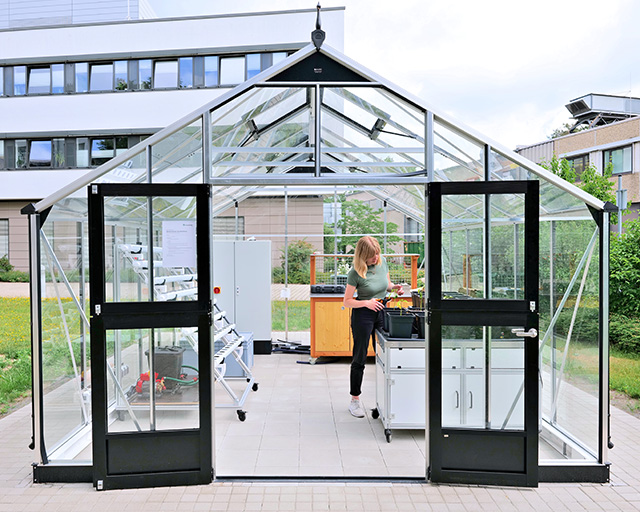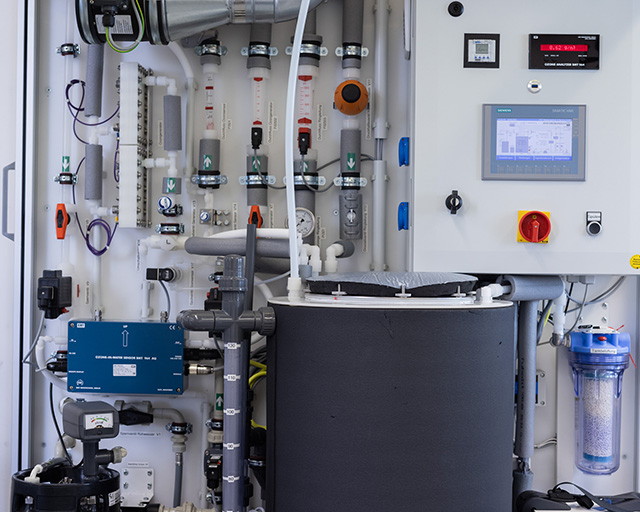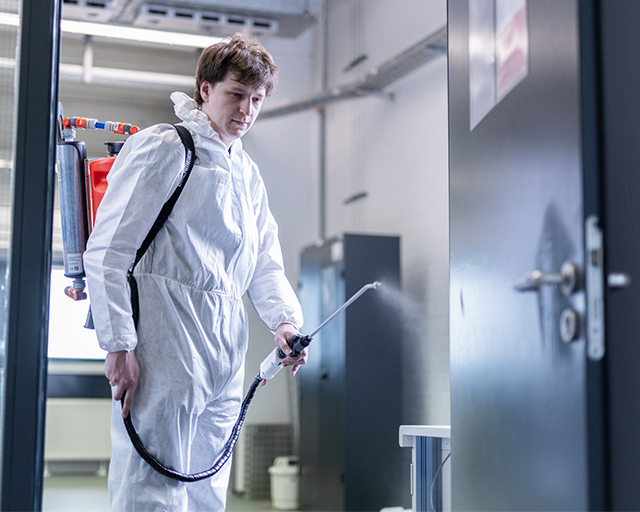Safeguarding the worldwide food supply is becoming increasingly challenging as a result of progressive climate change and the intensive exploitation of ecosystems: Water scarcity is increasing even in our latitudes, diverse contaminants hinder the reuse of water, energy prices are rising, and armed conflicts are impeding cultivation and export. This necessitates new solutions for producers in order to enhance their productivity whilst also minimizing the consumption of energy and water. Water suppliers and water users require solutions in order to reduce pollutants and avoid the utilization of chemicals.
Research for the crop production of the future





Crop production with highly productive cultivation systems
For the greatest possible control and optimization of cultivation conditions, vegetable growers are increasingly using greenhouses and hydroponic cultivation systems. These highly engineered systems present a wide range of challenges for which the Fraunhofer IST is developing solutions - with the aid of coating and surface technology as well as digitization. A greenhouse, newly built on the campus in Braunschweig, thereby serves as both a research laboratory and a demonstrator for customers and partners (see adjacent image above) in order to research and further develop sustainable agricultural systems.
The hydroponic cultivation systems installed in the greenhouse can be used to research aspects of plant production as well as to address R&D topics in the areas of irrigation and nutrient solutions.
Disinfection and pest control without the addition of chemicals
Using diamond-coated electrodes, ozone dissolved in water can be produced in a very energy-efficient manner. This enables process water systems and surfaces to be disinfected without having to add chemicals. The Fraunhofer IST has developed two demonstrator systems: In the mobile DiaDis unit (see adjacent image middle), 120 liters of ozonated water can be provided with up to 10 mg/m³ ozone, which, amongst other things, can be applied in plant cultivation to treat soils and to combat nematodes. With the portable spray unit (see adjacent image below), surfaces can be disinfected and pests on plants can be combated.
Outlook
The newly built greenhouse will be continuously expanded and equipped with additional production technology. Sensors and controls will enable digitization of plant production for monitoring, automation and process control. In the greenhouse, customers and partners will be able to test developments under real growing conditions.
The DiaDis system and the portable spray unit are available for trial use at customers’ premises; the ozonated water can be used to disinfect process water systems or surfaces and, based on the results, adapted systems can be developed to meet specific requirements.
[1] Kanfra, Xorla ; Elhady, Ahmed ; Thiem, Hendrik ; Pleger, Sven ; Höfer, Markus ; Heuer, Holger: Ozonated water electrolytically generated by diamond-coated electrodes controlled phytonematodes in replanted soil. In: Journal of Plant Diseases and Protection (2021), Nr. 128, S. 1657–1665